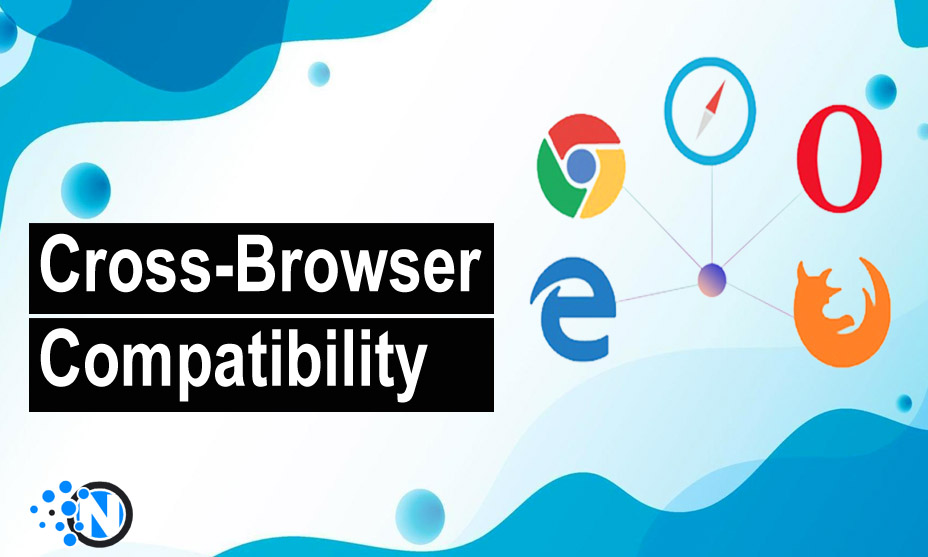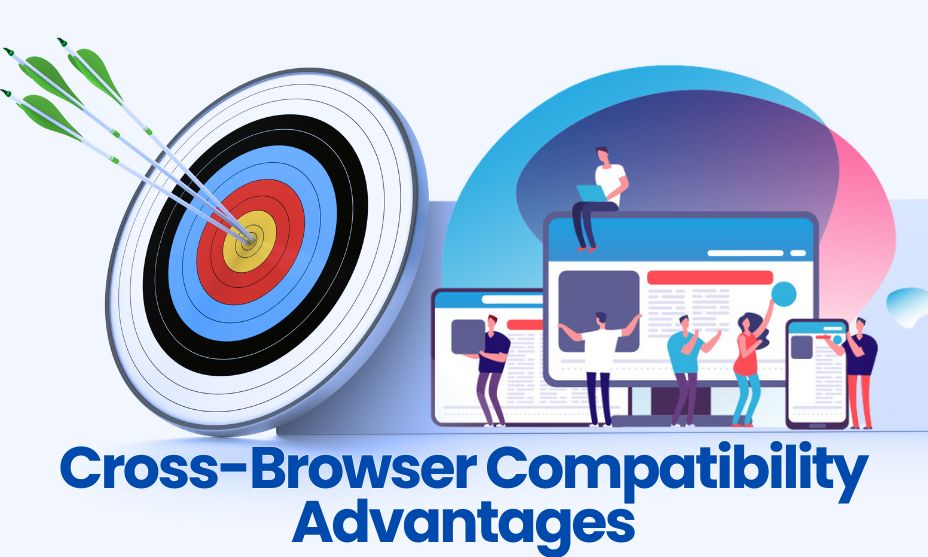What Is Cross-Browser Compatibility and Its Importance

A key component of web development is cross-browser compatibility, sometimes known as cross-browser support. It includes thorough testing, optimization, and coding procedures that guarantee a website, application, or HTML structure can operate without a hitch and render information consistently across a wide range of web browsers, independent of the kind, version, or platform. This complex procedure considers variations in JavaScript interpretation, CSS style, and rendering engines among browsers, including Google Chrome, Mozilla Firefox, Microsoft Edge, Safari, etc. A website or application must be cross-browser compatible to give users a consistent and user-friendly experience.
Understanding Cross-Browser Compatibility
Cross-browser compatibility is the ability of a web application or website to operate consistently and correctly across multiple web browsers. This is because the internet ecosystem consists of various web browsers with rendering engines and web standards interpretations. The four web browsers are Apple Safari, Microsoft Edge, Mozilla Firefox, and Google Chrome. How these browsers display web information, interpret HTML, CSS, and JavaScript, and handle other web technologies varies a little. Therefore, a website that displays and functions properly in one web browser might be unable to do the same in another, necessitating a more consistent and positive user experience to prevent potential clients from abandoning the site and never returning.
The Problems with Compatibility
When websites are not cross-browser interoperable, web developers frequently face several difficulties. These difficulties include:
- Layout problems: Text, photos, and navigation bars may be crooked or displayed differently in different browsers, harming the page’s aesthetics.
- Functionality Issues: In some browsers, interactive elements like forms, dropdown menus, and animations may not perform as intended.
- Variations in Performance: The performance capabilities of different browsers vary. Users may be frustrated if a website optimized for one browser performs poorly or crashes in another.
Why Browser Compatibility Is Important
For the following reasons, cross-browser compatibility is essential:
User satisfaction:
Ensuring a consistent browsing experience for all users can improve website credibility and reduce bounce rates caused by unpredictable encounters.
Broad Audience:
People access the internet using various devices and browsers. The accessibility of your website will increase as a result of ensuring compatibility.
SEO:
Search engine optimization (SEO) is crucial to online exposure and success. User-friendly websites are rewarded by search engines like Google. The user-friendliness of this website depends fundamentally on its compatibility with various browsers. Lower bounce rates, longer session lengths, and excellent user engagement metrics are all factors that can help your website rank well in search engines. Websites that are consistently accessible and usable across various platforms tend to have these characteristics.
Maintaining Brand Reputation:
Your website acts as a digital showroom for your company, and its efficiency speaks to the professionalism and dedication to your company’s user experience. A website that functions flawlessly in all browsers increases your business’s trustworthiness and demonstrates your commitment to excellence. It strengthens your brand’s reputation by powerfully communicating to your audience that you appreciate their experience and have made an effort to ensure a smooth transaction.
Cross-Browser Compatibility Advantages

Increased Conversion Rates:
Visitors with a positive user experience are likelier to stay on your site longer, interact with the material, and take desired actions like completing purchases or filling out contact forms. Users are more likely to convert into customers or complete the needed tasks when they find it simple to navigate and interact with your website, which results in increased conversion rates and, eventually, higher income.
Lower care Costs:
Ensuring that your website works consistently across browsers reduces the chance that users may encounter compatibility-related problems and need to contact customer care. Your support team can concentrate on more complicated and vital queries due to the drop in support requests, which saves time and resources. Reduced support expenses directly influence increased operational effectiveness and cost savings.
Improved User Retention:
Users happy with your website are more likely to return and use it again, boosting repeat business and customer loyalty. In addition to encouraging early engagement, consistency in the user experience across browsers promotes confidence and dependability. This may result in a sustained relationship between your brand and its target market, which will benefit your company in the form of repeat customers, sales, and recommendations.
Improved Brand Reputation:
A website reliably provides a seamless experience across all browsers speaks well of your brand’s professionalism and dedication to user happiness. Positive user experiences lead to increased brand perception, credibility, and trust. When visitors to your website have a positive experience, they are more inclined to refer others to it, enhancing your company’s reputation.
Better Accessibility:
Cross-browser compatibility helps individuals with impairments access content more easily. Making sure your website works well in browsers that support assistive technologies will increase the audience for your content and services. This dedication to diversity not only complies with moral principles but may also help your company tap into untapped markets and financial opportunities.
Favorable SEO Performance:
Search engines like Google reward websites that deliver a consistent, user-friendly experience. Cross-browser compatibility adds to higher user engagement metrics, such as fewer bounces and longer session lengths, which can benefit the search engine rankings of your website. Increased organic traffic and visibility from improved SEO performance can help your online presence.
How to Make Your Website Cross-Browser Compatible
Web developers use a variety of methods to assure cross-browser compatibility:
- Valid HTML and CSS: Creating valid HTML and CSS code while adhering to web standards is essential for compatibility.
- Progressive enhancement: Build a simple, usable version of your website first, then gradually add more sophisticated functionality that might not be available in all browsers.
- Browser testing: To find and resolve compatibility problems, test your website frequently in various browsers and versions.
- Feature detection: To identify browser features and offer workarounds when appropriate, use JavaScript tools like Modernizr.
Final Words:
Cross-browser compatibility is crucial for increasing user engagement and happiness, significantly impacting a website’s audience reach and overall financial success. Users who could otherwise face bugs, errors, or broken functionality when viewing the site with their chosen browser are spared from irritating experiences when web developers prioritize and painstakingly test for compatibility across different browsers.
Beyond merely addressing technical problems, this drive to ensure compatibility also displays a dedication to accessibility and diversity. Web designers can increase accessibility for a wider group of users, such as those with disabilities who depend on particular browser-screen reader combinations, by ensuring that a website works appropriately across various browsers.




